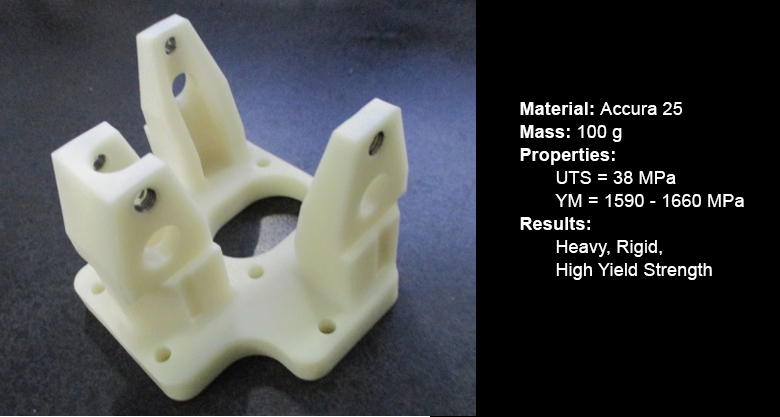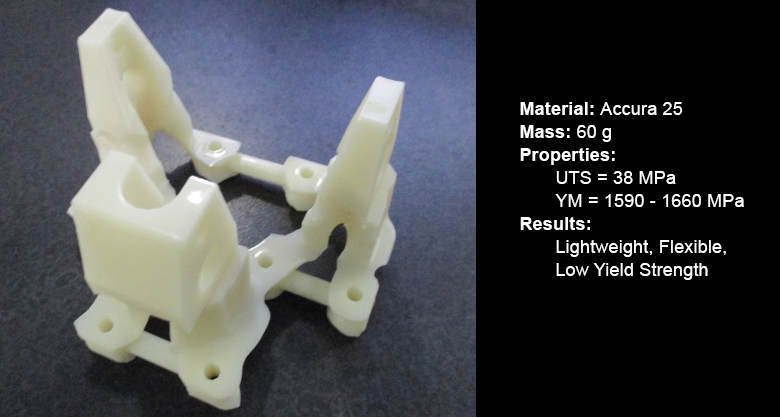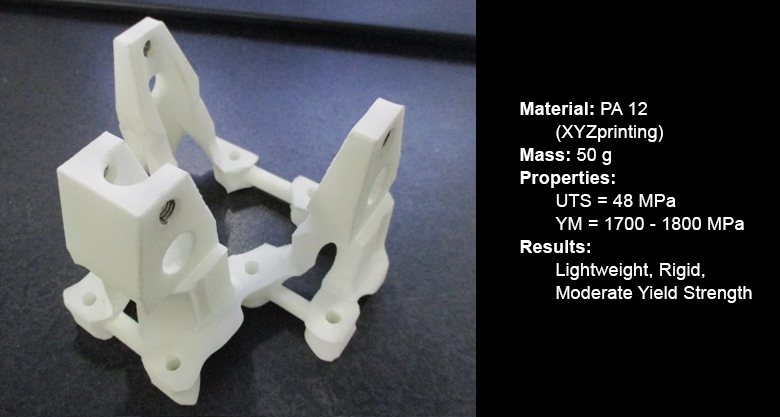BACKGROUND
HARBEC is an American manufacturing contractor that, for over 40 years, has aimed to provide effective solutions to customer problems and requests. HARBEC provides tight tolerance prototypes, tooling, machined components, and injection molded parts, while keeping sustainability in mind and having a social conscience. The company has been known to not only meet strict requirements with their projects, but to exceed expectations, using cutting-edge technology to proficiently accomplish their objectives.
CHALLENGE
HARBEC uses robots to perform some of the tasks that are part of the daily manufacturing processes at the facility. Each robot requires fitted tools to complete specific tasks. These tools are called end-of-arm tools, which in many cases are multiple pneumatically actioned claws or grippers, attached to a bracket of the required shape.
HARBEC owns many different 3D printing technologies that would be useful in creating the brackets for each job. Initially, an SLA (resin) printer was used to create the brackets, which had decent mechanical properties, and worked well for the job at hand. However, there was interest in reducing the weight of the robots’ gripper brackets.
Using SolidWorks topology optimization technologies, a new design was created that reduced the weight as much as possible, considering the required preserved areas and the forces on the design during operation. This optimized part was grown in the SLA printer, but the resulting component wasn’t as rigid as what was hoped for. HARBEC had to find a solution to maintain the lightweight design, but ensure the component had similar stiffness to that of the initial part.
SOLUTION
Trials with the SLA printer weren’t successful, and alternate methods were analyzed to provide a solution. The other types of printing options available at HARBEC include FDM, Polyjet, and SLS. A part that is lightweight, stiff, and dimensionally accurate is desired for these end of arm tools. Knowing this, a decision to use the XYZprinting MfgPro230 xS selective laser sintering machine was made. A nylon material can be used in the machine, and this material was chosen to print the end of arm tool.
The resulting mechanical properties were exactly what was desired. After a short inspection of the newly created part, it is easily noted that the part lost a significant amount of weight, while keeping a stiffness consistent with the original, non-optimized part.
Shown below is a representation of a few different routes taken to try and perfect this tool. (Note: UTS is an abbreviation for the Ultimate Tensile Strength, and YM stands for Young’s Modulus)



It is notable that the PA 12 material has larger values for many important mechanical properties, which may have a relationship with the increased rigidity when using the polyamide material in the MfgPro230 xS. The PA 12 material has the properties that were desired for this project, and the XYZprinting MfgPro230 xS uses this material well, all while maintaining the directional accuracy required in this case. As a result, we have designed a lightweight, rigid, and accurate end of arm tool for the robot. The tool, fitted with the gripper mechanisms is imaged below.
RESULTS
The MfgPro230 xS has taken TrySight’s business to the next level with professionally produced short run parts that rival injection molding with no tooling cost. Additionally, the ability to produce bespoke parts allows TrySight to offer clients custom fit parts in a variety of materials which provides a unique competitive edge.
Download this case study at XYZprinting.
License: The text of "XYZprinting Case Study: Strong, Lightweight Robotic Parts (Ad)" by All3DP is licensed under a Creative Commons Attribution 4.0 International License.